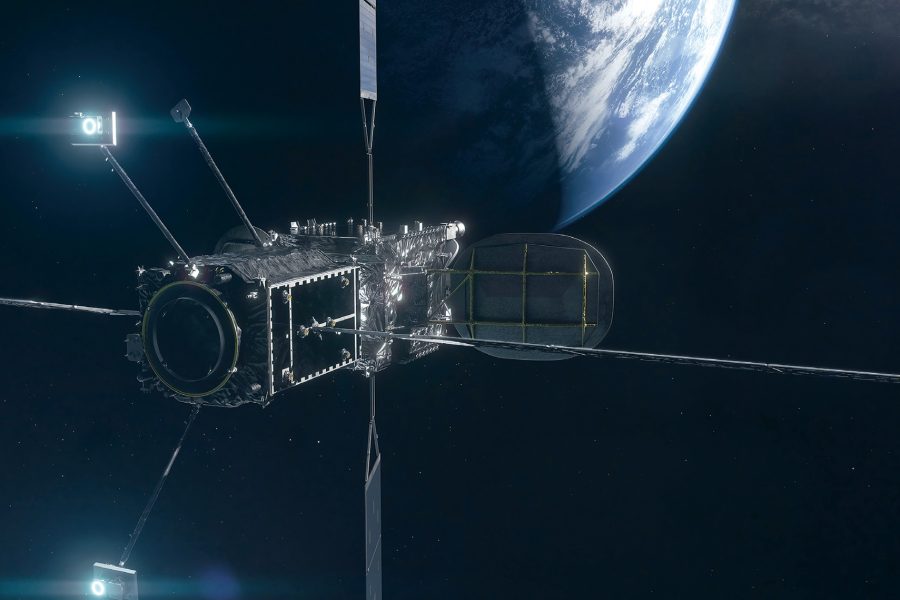Northrop Grumman is teaming up with startup Luminary Cloud to use the tech firm’s physics-based AI platform, with hopes of significantly reducing the time it takes to design and develop space systems.
The companies announced the partnership Oct. 28, but they’ve already started working together; Over the last two months, they have developed a model to design and develop a spacecraft thruster nozzle, condensing what can be a yearslong process to just months.
“Using AI to make something small, like a spacecraft thruster, puts us on a path to do much bigger things, like using AI to design larger components or even an entire spacecraft,” Han Park, vice president for AI integration within Northrop’s space systems business, said in an Oct. 28 statement.
Physics AI is a new, but fast-growing, technology area, Luminary Cloud’s Chief Technology Officer Juan Alonso told Air & Space Forces Magazine. Rather than generative AI, which can produce text and image from large data sets, physics AI uses the technology to generate models that make predictions about how a system will engage with the physical world.
“It’s been within the last two years where that inflection point of the curve has started to take place, where the amount of data people like us at Luminary can actually generate is sufficient to give you good accuracy of these models,” he said.
The technology builds on the progress the Pentagon and industry have made in adopting digital design—software tools that allow engineers to design systems without pen and paper, making tweaks easier and keeping stakeholders informed of all changes as they happen.
In the case of Northrop’s rocket thruster nozzle, Luminary Cloud’s platform was able to use physics AI to predict how different designs might perform in a matter of seconds versus the hours it might typically take. The platform used NVIDIA’s open source PhysicsNeMo capability to feed data and train its models.
The implications of that technology for a program’s overall cost and schedule are significant, Alonso said.
“You could retire risks much earlier on, you could get more conclusive answers for anything that you try in the design process, and obviously, then you have a downstream impact of greatly reducing the total amount of time that it takes to create, prototype, and field a new product—and also the cost that’s required to do that,” he said.
One hurdle to greater adoption of these types of physics AI models across the defense and commercial markets is getting engineers and program managers to trust that the technology works. But Alonso said he’s seen engineers change their tune as they see the accuracy and efficiency platforms like Luminary Cloud can offer.
“Most engineers are skeptical by nature,” he said. “Little by little, they start seeing, ‘Holy cow, this thing actually works just as well as the high-fidelity simulations, yet I can do tens of thousands of simulations in the time that it would have taken me to do a single one.’”
Luminary Cloud is in discussions with the Defense Advanced Research Projects Agency, the Air Force, and other Defense Department agencies that are interested in the platform, Alonso said, though none of those deals have been formalized. He noted that some of these potential customers have classification requirements that the platform is not yet equipped to manage.
As for the Northrop Grumman partnership, Alonso said he expects the initial demonstration is just the beginning.
“We view this as a starting point for collaboration with Northrop Grumman,” he said. “We have been helping develop this model as a proof of concept, but we expect them to internally generate data sets and create new models for different applications that we may not even be involved in but using our product.”


